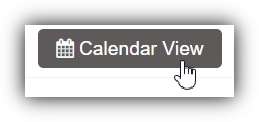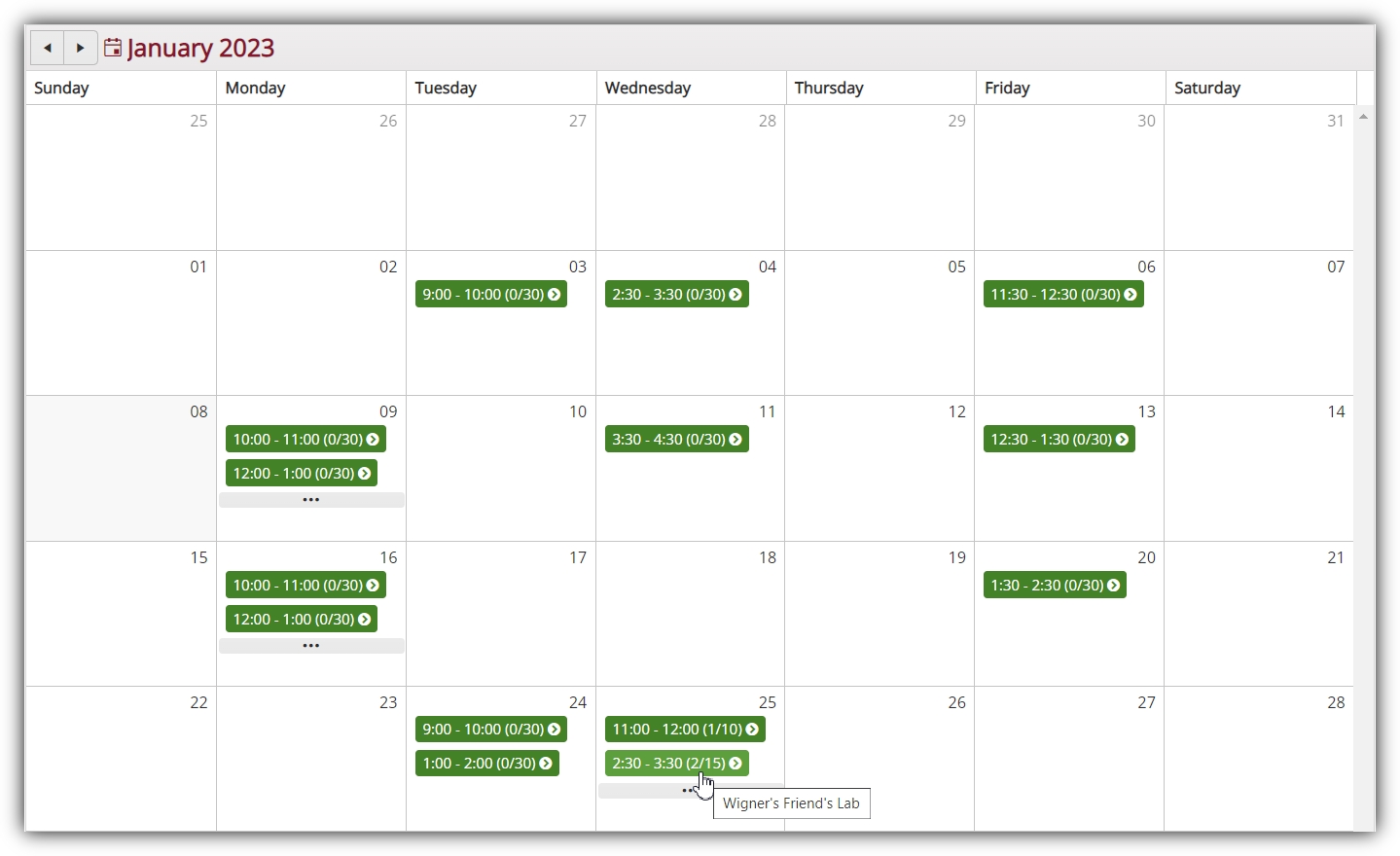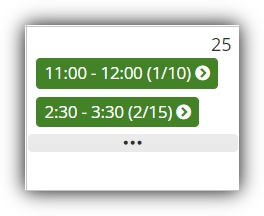
New View: Scheduling with the Researcher’s Calendar
Published January 26, 2023
Timeslots are at the core of the Sona platform. This has less to do with any design choices or particular implementation method, but is rather due to the simple fact that conducting studies is at the heart of the scientific endeavor and crucial to its advancement. Sona helps researchers across the globe organize and optimize the research process. Because so much of science revolves around time spent in the lab, it is no surprise that so much of our platform involves managing lab time. This translates rather directly into handling timeslots.
Although scheduling is only one out of many timeslot-related processes, it is not much of an exaggeration to say that all such tasks revolve around one: Adding timeslots to a study. After all, if researchers don’t schedule timeslots for their studies, they can’t mark participation, or recruit participants from the Sona pool, or conduct studies, or give students firsthand experience with research, or…We could go on, but no doubt you get the picture. There are no studies unless researchers can set aside available times participants can sign up for.
Naturally, the Sona platform has a slew of features to help both the central and peripheral aspects of managing timeslots. That said, because so many of these, not to mention the various improvements and new options we introduce, tend to work at least partly behind the scenes (often in tandem with other features, and often involving multiple steps as part of a larger process), distilling them into a self-contained, compact manner isn’t easy. Even less rarely we can capture so much of a new feature so readily in a single graphic.
For the researcher’s calendar view, we can. We’ll take a minute to let you log in to your Sona site so that you can have a look for yourself. To do so, just select “View Studies” from the study dropdown menu, then click on the “Timeslots” link of any in-person study (i.e., not online) you want:
We won’t be changing anything, so any study with timeslots will do, with the exception of online studies. If you’ve ever set-up online studies in Sona, the use of the plural timeslots here may give you an idea as to why online studies don’t have a calendar view. Online studies do require you to add a timeslot, but they work very differently. Typically, an online study only requires one timeslot, and only a final participation date and final participation time (no start date/time). In a sense, the “timeslot” in this case is the entire interval from the time the study is active to the final participation time (for more information, see Web-Based (Online) Studies).
Once you’ve navigated to a study’s timeslots page, take a look at the view tabs. You’ll want to select the “All Timeslots” tab in order to access the researcher’s calendar view:

After you’ve clicked the “All Timeslots” tab, scroll to the right and click on the “Calendar View” button:
That’s it! This is the calendar view for researchers. For those not currently following along, don’t worry! You can still get a sense of what it looks like using the image below as an example:
There’s more here than an initial glance might reveal. So let’s take a closer look at a day in a study’s calendar. Specifially, the 25th:
It’s clear that there are two timeslots scheduled for this day. But what might be missed (at least at a first glance) are the parenthetical numbers after the times. Every timeslot will have an expression of the form (X/Y) telling researchers that for this timeslot there are X participants signed up out of Y total spaces.
We can make this more concrete by using the example image of the 25th above. Here, we see that for each of the two timeslots there is a ratio of spaces filled (i.e., participants currently signed up) out of the total allowed. The first timeslot has 1/10, indicating that one participant has signed up for 1 out of a total of 10 spaces. Similarly, the 2/15 for the next timeslot that day indicates that 2 out of the 15 total spaces are taken. That’s a lot of information, and it’s just for one day.
A study’s calendar is for a month, and in this case blank days give information too. That’s why this view makes seeing scheduled timeslots, both past and upcoming, as easy as, well…looking at the calendar! It is also why selecting the “All Timeslots” tab is important (or, more precisely, why we put the “Calendar View” button there). The researcher’s calendar view is about getting the most information about a study’s timeslots in the easiest way possible, independent of the goal.
That last remark is worth expanding on. What do we mean by “independent of the goal”? Well, say that the goal is determining remaining (available) times to schedule timeslots. More specifically, suppose researchers on your site are adding timeslots to one of their studies. While they do this, they’ll often want to to switch to a view that will allow them to easily see what days/times are still open, as well as the times they’ve already added (and check that these correspond to days/times they intended to add!). That’s what the researcher’s calendar view is for.
Or the goal could be examining participant signup times. Perhaps, for example, a study has too few participants and it isn’t clear why. One natural question is whether enough timeslots were created, or whether those created were for convenient times. That’s what the researcher’s calendar view is for.
Or it could be that a researcher wants to double-check their personal calendar against their study’s timeslot calendar to make sure that yes, they do indeed need to be in the lab this Tuesday. That’s what the researcher’s calendar view is for.
This is what “independent of the goal” means. It means that it doesn’t matter why a researcher might want to see the full schedule of timeslots for a study—That reason (whatever it may be) is what the researcher’s calendar view is for.
At the end of the day, it’s about looking at a calendar, and we don’t need to tell you that there are all kinds of reasons you might want to do this. In fact, if you happen to get a phone call while you’re logged in to your Sona site, and you need to see if the 16th of this month falls on a Wednesday to coordinate a surprise birthday party, feel free to pull up this calendar view if that’s the quickest way to check. It might just be, at least for many researchers, because being able to check the researcher’s calendar view for a study will quickly become so familiar researchers will wonder how they managed without.
We’re not precisely hoping that the phrase “let me check my calendar” comes to mean “let me check my study’s Sona calendar” among those in the relevant scientific communities. But we wouldn’t mind too much if it did.






